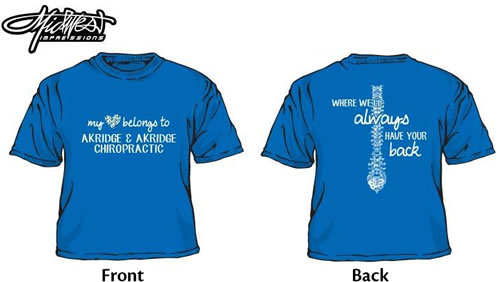You know the signs of being stressed out. Your heart beats faster, muscles tense, and it’s more difficult to think while you’re trying to meet a deadline or cope with a last-minute problem.
But when you get a headache that same night or your lower back pain flares up the next day, you still could be suffering the effects of the earlier stress.
 “Past or present psychological distress can also lead to pain, particularly low-back pain, which often comes with leg pain, headaches, sleep problems, anxiety, and depression,” according to the American Chiropractic Association. “Stress may even be a more powerful pain generator than strenuous physical activity or repetitive motion.”
“Past or present psychological distress can also lead to pain, particularly low-back pain, which often comes with leg pain, headaches, sleep problems, anxiety, and depression,” according to the American Chiropractic Association. “Stress may even be a more powerful pain generator than strenuous physical activity or repetitive motion.”
When you’re stressed, your body releases a hormone called epinephrine, or adrenaline. This increases heart rate, blood pressure, and blood glucose levels. Your body also releases glucocorticoid cortisol, or hydrocortisone, which suppresses inflammation and the immune system.
All of these reactions are necessary when you’re facing a one-time “fight-or-flight” situation: someone is attacking you, for example. But when the stress is ongoing, from work or at home, it takes a toll on your body.
High levels of glucocorticoids can hinder growth, delay wound healing, and increase risk of infection.
“Chronic stressors — or their constant anticipation — can make us believe that we must always be on guard, leading to anxiety,” the ACA says. “Feelings of hopelessness or avoiding solving our problems can spark depression.”
Chiropractic care can help manage lower back and other pain that flares up in stressful situations. The ACA also recommends exercise, massage and other stress-relief measures to keep you pain-free.
April is national Stress Awareness Month. If you think you’re in pain due to stress, please check in with Dr. Craig or Dr. Lacey. We’ll evaluate the source and help you find ways to relieve both the stress and the pain.


 “Past or present psychological distress can also lead to pain, particularly low-back pain, which often comes with leg pain, headaches, sleep problems, anxiety, and depression,” according to the American Chiropractic Association. “Stress may even be a more powerful pain generator than strenuous physical activity or repetitive motion.”
“Past or present psychological distress can also lead to pain, particularly low-back pain, which often comes with leg pain, headaches, sleep problems, anxiety, and depression,” according to the American Chiropractic Association. “Stress may even be a more powerful pain generator than strenuous physical activity or repetitive motion.”